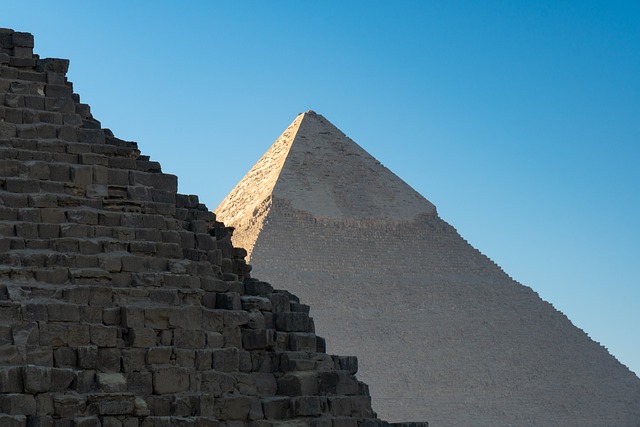Ancient Chinese Dynasties: Contributions and Legacies
China’s rich history is punctuated by the rise and fall of numerous dynasties, each leaving a profound imprint on the country’s culture, politics, philosophy, and society. From the earliest recorded dynasties to the imperial systems that shaped China’s identity for millennia, these ruling families have defined and reshaped the course of Chinese civilization. Among the most notable dynasties are the Shang, Zhou, Qin, and Han, each leaving enduring legacies that continue to influence modern China.
The Shang Dynasty: A Glance into China’s Earliest Civilization
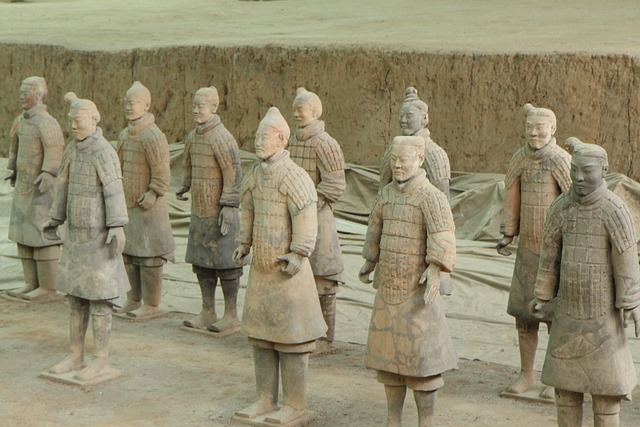
The Shang Dynasty stands as a cornerstone in the annals of Chinese history, marking the genesis of recorded civilization in the region. Flourishing along the fertile banks of the Yellow River, this ancient dynasty, which thrived from approximately 1600 BCE to 1046 BCE, left an indelible mark on Chinese culture, technology, and governance. Through its mastery of bronze casting, development of the oracle bone script, and establishment of a structured social hierarchy, the Shang Dynasty laid the groundwork for subsequent dynastic rule in China.
Bronze Casting: Technological Marvels
One of the most remarkable achievements of the Shang Dynasty was its mastery of bronze metallurgy. The artisans of the era honed their skills to perfection, producing exquisite vessels, weaponry, and ceremonial objects. These artifacts, adorned with intricate designs and motifs, not only served practical purposes but also reflected the dynasty’s technological prowess and artistic sophistication. The Shang’s proficiency in bronze casting enabled the creation of objects of both utility and beauty, showcasing their advanced understanding of metallurgy and craftsmanship.
Oracle Bone Script: The Written Word Unveiled
In addition to its advancements in metallurgy, the Shang Dynasty made significant strides in the realm of written communication. The development of the oracle bone script stands as a testament to the intellectual achievements of this ancient civilization. Utilized for divination purposes, this early form of Chinese writing was inscribed on animal bones and turtle shells, providing a window into the beliefs, practices, and language of the Shang people. Through the deciphering of these inscriptions, scholars have gained invaluable insights into the religious rituals, political affairs, and social customs of ancient China, illuminating the cultural landscape of the Shang Dynasty.
Social Hierarchy: Structure and Order
Central to the organization of Shang society was the establishment of a rigid social hierarchy. At its apex stood the king, wielding supreme authority over the realm. Beneath him, a class of nobles and aristocrats exerted influence and power, while skilled artisans and craftsmen plied their trades with precision and expertise. At the base of the hierarchy were the peasants, toiling the land and sustaining the foundation of Shang civilization. This hierarchical structure provided stability and order within Shang society, facilitating the administration of justice, allocation of resources, and maintenance of social cohesion.
Legacy and Impact
The legacy of the Shang Dynasty reverberates through the corridors of Chinese history, leaving an enduring imprint on the cultural, technological, and social landscape of ancient China. Its mastery of bronze casting and development of the oracle bone script paved the way for subsequent advancements in art, literature, and philosophy. The structured social hierarchy established by the Shang Dynasty laid the foundation for the hierarchical systems of governance that characterized later dynastic rule in China. Despite the passage of millennia, the legacy of the Shang Dynasty endures as a testament to the ingenuity, creativity, and resilience of one of the world’s earliest civilizations.
In conclusion, the Shang Dynasty stands as a beacon of civilization, illuminating the path of China’s ancient past. Through its technological innovations, literary achievements, and social structures, the Shang Dynasty forged a legacy that continues to resonate in the hearts and minds of the Chinese people and the world at large.
The Zhou Dynasty: A Tapestry of Political Philosophy and Cultural Flourish
Ancient Chinese Dynasties like the Zhou Dynasty stand as pivotal epochs in the annals of Chinese history, marked by enduring contributions to political theory, social organization, and philosophical inquiry. The Zhou Dynasty, which reigned from approximately 1046 BCE to 256 BCE, emerged in the wake of the Shang Dynasty’s demise and is divided into two distinct periods: the Western Zhou and the Eastern Zhou. Through the formulation of the Mandate of Heaven, the implementation of a feudal system, and the proliferation of philosophical schools such as Confucianism and Daoism, the Zhou Dynasty left an indelible imprint on the fabric of Chinese civilization.
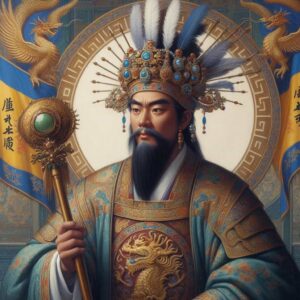
Mandate of Heaven: Legitimacy and Divine Rule
Central to the Zhou Dynasty’s political ideology was the concept of the Mandate of Heaven, which served to legitimize the ruler’s authority based on divine approval. According to this doctrine, the ruler’s right to govern was contingent upon his virtuous conduct and ability to maintain social harmony. Should a ruler fail to uphold these principles, it was believed that the mandate would be withdrawn, leading to the overthrow of the dynasty. The concept of the Mandate of Heaven provided a moral and ideological framework for governance, shaping Chinese political philosophy for centuries to come and fostering the notion of dynastic cycles.
Feudal System: Land, Loyalty, and Decentralization
Instituting a feudal system, the Zhou Dynasty granted land to regional lords in exchange for loyalty, military service, and tribute. This decentralized structure, known as the “fengjian” system, facilitated regional autonomy and enabled the Zhou rulers to extend their influence across vast territories. However, the proliferation of independent feudal states also sowed the seeds of fragmentation and internal strife, ultimately contributing to the downfall of the dynasty during the Eastern Zhou period. Despite its eventual dissolution, the feudal system laid the groundwork for subsequent forms of governance and land administration in China.
Confucianism and Daoism: Philosophical Inquiry and Moral Precepts
The Zhou Dynasty fostered a flourishing intellectual environment characterized by profound philosophical inquiry and moral reflection. It was during this period that influential schools of thought such as Confucianism and Daoism emerged, each offering distinct perspectives on ethics, governance, and the nature of reality. Confucianism, founded by Confucius, emphasized moral virtue, social harmony, and filial piety as the cornerstones of a just and harmonious society. Daoism, attributed to the sage Laozi, advocated for harmony with nature, spontaneity, and the cultivation of inner tranquility as pathways to enlightenment. These philosophical traditions not only influenced individual conduct but also shaped the ethical framework of Chinese civilization for generations to come.
Legacy and Impact
The legacy of the Zhou Dynasty transcends the boundaries of time, reverberating through the corridors of Chinese history and culture. Its formulation of the Mandate of Heaven provided a legitimizing principle for dynastic rule, while the feudal system laid the groundwork for decentralized governance in China. The philosophical insights of Confucianism and Daoism continue to resonate in the hearts and minds of the Chinese people, informing moral conduct, political discourse, and spiritual contemplation. Despite the challenges and complexities of its era, the Zhou Dynasty stands as a testament to the enduring quest for wisdom, virtue, and harmonious living in the tapestry of Chinese civilization.
In conclusion, the Zhou Dynasty represents a golden age of intellectual inquiry and cultural achievement in ancient China. Through its political innovations, philosophical insights, and social institutions, the dynasty forged a legacy that continues to shape the identity and ethos of the Chinese nation to this day.
The Qin Dynasty: A Monument of Centralization and Innovation
Ancient Chinese Dynasties like the Qin Dynasty, which reigned from 221 BCE to 206 BCE, represent defining epochs in Chinese history. The Qin Dynasty is characterized by unparalleled centralization, groundbreaking innovation, and the propagation of Legalist philosophy. Under the visionary leadership of Emperor Qin Shi Huang, this dynasty left an indelible imprint on the political, cultural, and architectural landscape of ancient China. Through the unification of China, the construction of the Great Wall, and the dissemination of Legalist ideology, the Qin Dynasty reshaped the course of Chinese civilization, laying the foundation for subsequent imperial dynasties.
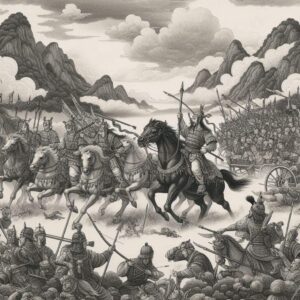
Unified China: The Triumph of Centralization
Central to the legacy of the Qin Dynasty was its unprecedented achievement in unifying the disparate states and kingdoms of China under a centralized imperial administration. Emperor Qin Shi Huang, renowned for his ambitious vision and administrative acumen, implemented far-reaching reforms aimed at standardizing currency, weights and measures, and the writing system across the newly unified empire. This monumental feat of centralization not only facilitated administrative efficiency but also fostered cultural cohesion and national identity, laying the groundwork for the enduring unity of China under subsequent dynastic rule.
Great Wall of China: Sentinel of Sovereignty
The Qin Dynasty’s most enduring architectural legacy is undoubtedly the Great Wall of China, a monumental testament to the dynasty’s commitment to national defense and territorial integrity. Recognizing the perennial threat posed by nomadic tribes from the north, Emperor Qin Shi Huang initiated the construction of the Great Wall as a formidable defensive barrier against incursions and invasions. While subsequent dynasties would expand and reinforce the Great Wall, the Qin Dynasty’s pioneering efforts were instrumental in its initial construction, underscoring the dynasty’s unwavering resolve to safeguard the frontiers of the empire and preserve its sovereignty.
Legalism: The Sword and Shield of Imperial Authority
At the heart of the Qin Dynasty’s political philosophy lay the tenets of Legalism, a pragmatic doctrine that emphasized strict laws, centralized authority, and draconian punishments as indispensable tools for maintaining social order and consolidating power. Under the influence of Legalist scholars such as Han Fei, the Qin rulers instituted a highly centralized administrative apparatus characterized by bureaucratic rigor and absolute obedience to imperial authority. While effective in suppressing dissent and enforcing obedience, Legalism also engendered widespread discontent and rebellion among the populace, highlighting the inherent tensions between authoritarian governance and individual liberties.
Legacy and Impact
The legacy of the Qin Dynasty reverberates through the corridors of Chinese history, leaving an indelible imprint on the collective consciousness of the Chinese people and the world at large. Its achievements in unifying China, constructing the Great Wall, and propagating Legalist ideology laid the foundation for the imperial glory and cultural splendor of subsequent dynasties. Despite its brief duration and eventual demise, the Qin Dynasty remains a towering symbol of centralization, innovation, and authoritarian governance in the annals of Chinese civilization.
In conclusion, the Qin Dynasty stands as a monument to the triumphs and tribulations of ancient China, embodying the complexities and contradictions of imperial rule. Through its visionary leadership, monumental achievements, and enduring legacy, the dynasty continues to inspire awe and fascination, serving as a beacon of resilience and innovation in the tapestry of Chinese history.
The Han Dynasty: Epitome of Cultural Brilliance and Technological Ingenuity
Ancient Chinese Dynasties such as the Han Dynasty, which spanned from 206 BCE to 220 CE, stand as beacons of enlightenment and innovation in the annals of Chinese history. Renowned as the golden age of Chinese civilization, the Han Dynasty witnessed remarkable advancements in governance, technology, and cultural exchange that continue to shape the world today. Through the establishment of a merit-based civil service system, the development of the Silk Road, and groundbreaking achievements in science and technology, the Han Dynasty ushered in an era of unprecedented prosperity and cultural flourishing, leaving an enduring legacy that resonates through the ages.
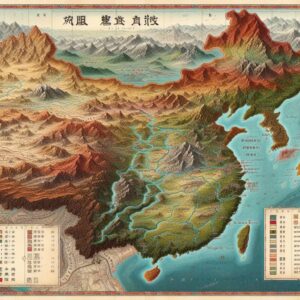
Civil Service System: Meritocracy and Governance
Central to the Han Dynasty’s governance was the establishment of a merit-based civil service system known as the imperial examination. Unlike previous dynasties that relied on hereditary privilege or familial connections for bureaucratic appointments, the Han Dynasty recruited officials based on their knowledge of Confucian classics and administrative abilities. This revolutionary system promoted social mobility and meritocracy, enabling talented individuals from diverse backgrounds to ascend to positions of power and influence within the government. The imperial examination system not only ensured the competency and integrity of government officials but also fostered a culture of intellectualism and scholarly pursuit that enriched Chinese society for centuries to come.
Silk Road: Gateway to Global Exchange
The Han Dynasty’s most enduring legacy lies in its facilitation of trade and cultural exchange through the development of the Silk Road. This vast network of trade routes connected China to Central Asia, the Middle East, and Europe, fostering the exchange of goods, ideas, and technologies across continents and civilizations. The Silk Road served as a conduit for silk, spices, precious metals, and exotic commodities, enriching the economies of participating regions and catalyzing cultural diffusion and cross-cultural interaction. Alongside commercial goods, the Silk Road also facilitated the spread of religions, philosophies, and artistic traditions, contributing to the cosmopolitanism and diversity of the ancient world.
Scientific and Technological Innovations: Pioneers of Progress
The Han Dynasty emerged as a hotbed of scientific and technological innovation, making significant strides in fields such as astronomy, mathematics, medicine, and agriculture. Notable inventions and discoveries from this period include the water clock, papermaking, the seismoscope, and acupuncture, each revolutionizing their respective fields and enhancing the quality of life for people across the empire. Han astronomers meticulously charted the movements of celestial bodies, laying the groundwork for accurate calendars and navigation systems. Mathematicians developed sophisticated algorithms and numerical systems, facilitating advances in engineering, commerce, and architecture. Medical practitioners refined the art of acupuncture and herbal medicine, pioneering treatments for a wide range of ailments and illnesses. Agricultural innovations, such as irrigation techniques and crop rotation methods, bolstered food production and sustained the burgeoning population of the Han Dynasty.
Legacy and Impact
The legacy of the Han Dynasty endures as a testament to the boundless creativity, resilience, and ingenuity of the Chinese people. Its achievements in governance, trade, and technology laid the foundation for China’s enduring influence on global civilization. The civil service system, Silk Road, and scientific innovations of the Han Dynasty continue to shape the fabric of contemporary Chinese society and inspire generations of scholars, entrepreneurs, and innovators. As a beacon of cultural brilliance and technological progress, the Han Dynasty stands as a testament to the transformative power of human endeavor and the enduring quest for knowledge and enlightenment.
In conclusion, the Han Dynasty represents a pinnacle of achievement and enlightenment in the annals of Chinese history. Through its commitment to meritocracy, global engagement, and scientific inquiry, the dynasty propelled China to unprecedented heights of prosperity and cultural vibrancy, leaving an indelible mark on the world stage. As we look back on the legacy of the Han Dynasty, we are reminded of the timeless pursuit of progress and the enduring legacy of human ingenuity in shaping the destiny of nations and civilizations.
Conclusion
The Shang, Zhou, Qin, and Han Dynasties represent pivotal chapters in China’s long and storied history. Each dynasty contributed unique innovations, institutions, and cultural achievements that have shaped the trajectory of Chinese civilization. While these dynasties rose and fell over the millennia, their legacies endure as enduring testaments to the ingenuity, resilience, and complexity of ancient Chinese society.


